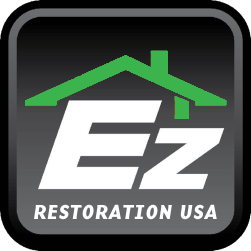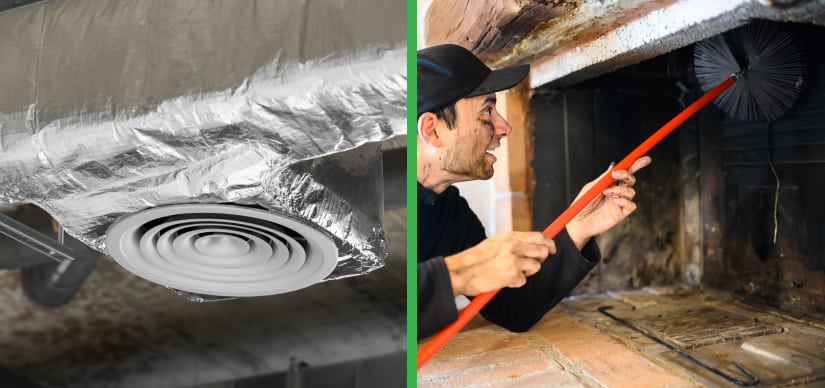What is the Recommended Frequency for Cleaning HVAC Ducts?
Clean ducts certainly enhance the efficiency of the HVAC system, circulate optimal airflow, and reduce energy consumption. It also prevents circulating pollutants, respiratory issues, and allergies. However, it is advisable to clean HVAC ducts only at specific intervals; otherwise, they may experience wear sooner than they should.
There is a recommended frequency by industry experts, which needs to be followed to keep the condition of the HVAC system.
This blog guides creating a routine that ensures both efficiency and air quality. Factors that affect the frequency of HVAC duct cleaning will also be discussed.
What are the Factors Determining the Frequency HVAC Duct Cleaning?
There’s no magic number for the frequency of HVAC duct cleaning. Many factors influence it, including the local climate, the presence of pets, indoor air quality concerns, and any recent renovations or construction activities. Each of these factors is discussed to help establish an appropriate cleaning schedule.
Local conditions that help determine how often one should clean their HVAC ducts include climate, pollution, vegetation and flora, construction activities, allergens, etc.
-
Climate
Before HVAC installation in San Diego, one should consider the humidity levels in the surroundings that may contribute to mold growth in ducts and require frequent cleaning. -
Environmental Pollution
Pollution in the area would increase air pollutants, necessitating more frequent duct cleaning.
In general, urban areas tend to have more pollution than rural areas, which implies regular cleaning would only maintain indoor air quality. -
Vegetation and Flora:
Organic debris enters the HVAC system much more easily when the surroundings have dense vegetation, which increases the cleaning frequency. -
Construction Activities:
Places, where construction activities occur more, are prone to dust and pollen and so would require frequent duct cleaning. Considering the area around, HVAC duct cleaning San Diego is advisable following renovations or construction to eliminate the dust and debris produced during
the process. -
Local Allergens:
Pet dander, mold spores, or pollen commonly found during pollen season, which might accumulate in the duct and decrease efficiency, should be cleaned to prevent allergies. -
Air Quality Regulations
Many areas have strict air quality regulations for which cleaning the duct could be necessary to meet the environmental standards, especially in the case of central air installation. -
Occupant Habits:
Indoor activities such as excessive cooking and burning candles add to debris and scatters in the duct, which requires more frequent cleaning. Areas where there are more smokers will require more frequent cleaning. -
Local Pest Activity:
The frequency of HVAC duct cleaning may need to be increased in areas where pest activity is more prevalent. Reviewing these factors aids in maintaining a Clean indoor atmosphere and ascertaining the efficient working of the HVAC system.
What are the Factors Determining the Frequency HVAC Duct Cleaning?
The organization recommending cleaning frequency for HVAC ducts is the National Air Duct Cleaners Association (NADCA). The extensive guidelines aid in preserving acceptable indoor air quality, optimizing system energy efficiency, and contributing to the overall well-being of occupants.
- NADCA recommends regular inspection of the HVAC ducts to see if cleaning is required. Such inspections help identify early signs of contamination, dust, or microbial/ fungus growth. It also has the advantage of taking early action in case the cleaning is required.
- The recommended cleaning frequency primarily depends on the occupancy and usage of the building. High-occupancy spaces or facilities with increased pollutant generation may require more frequent cleaning. Comparatively, buildings with fewer inhabitants, Buildings with lower occupancy and minimal pollutant sources may not need cleaning as frequently.
- Dust and contaminants from environmental factors such as location, climate, and surrounding vegetation can impact the condition of ductwork. Buildings near dusty or industrial areas tend to accumulate dust in the HVAC ducts, which may require more frequent cleaning.
- NADCA highlights the importance of cleaning your air ducts only after the construction or renovation projects are over. Cleaning post-construction helps maintain a clean and healthy indoor environment.
- NADCA also recommends routine cleaning to remove debris and allow uninterrupted airflow. Regular cleaning contributes to saving energy and cost by increasing the efficiency of HVAC systems.
- NADCA advises employing professional duct cleaning services who are well-known and experienced to abide by the industry standards should be hired for HVAC cleaning.
- A 3-5 years gap is a sufficient time gap suggested for cleaning the HVAC ducts as mentioned in the NADCA guidelines. Remember, excessive or overzealous duct cleaning may, in fact, reduce the lifespan of your HVAC system. That’s why industry experts recommend specific cleaning intervals, tailored to your unique needs.
- Additionally, the Environmental Protection Agency (EPA) also suggests regular inspection of HVAC ducts to check the presence of a clogged duct or visible mold growth.
- For households with pets and allergies, the American Heating and Air Conditioning Contractors Association recommends a cleaning schedule every 2-4 years.
Signs that the Duct Cleaning Services are required:
- Dust accumulation around the air vents could cause duct blockages, indicating the need for cleaning.
- Mold growth easily occurs in dark, damp conditions of the HVAC ducts, which require immediate cleaning.
- Insects and rodent droppings should be identified and cleaned on time to avoid health risks and damage to the appliance. To avoid HVAC repair in San Diego, it is better to take early action by proactively inspecting the signs.
- Interrupted airflow from the vents due to clogging can affect the air circulation and the appliance’s efficiency.
- A sudden rise in the energy bill could also signal duct cleaning due to blockage.
Summary
NADCA guidelines are essential to maintain an efficient HVAC system, which is beneficial for reducing energy demand and utility bills. Recognizing the factors influencing the frequency of HVAC duct cleaning should be taking care of them in time avoids escalation of the issue. Professional HVAC contractors should be contacted for correct and comprehensive assessment of the system. As per their recommendation, a cleaning schedule should be set based on the specific circumstances of the building. Give preference to qualified professionals in HVAC system maintenance to ensure the job is done effectively and safely.


